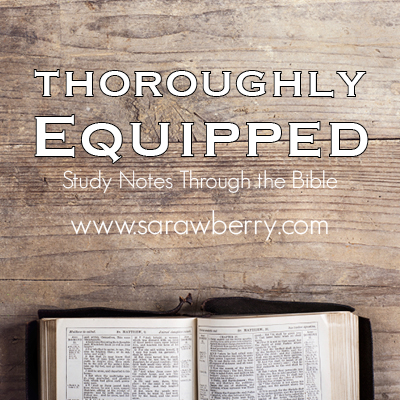Today’s reading includes Joshua 21:1-22:20, Luke 20:1-26, Psalm 89:1-13, Proverbs 13:15-16.
Today’s reading speaks of the Cities of Refuge, which had been commanded by Moses, but were now able to be put into action. The Old Testament is focused on blood. Blood shed by man cursed the land and cursed the one who shed the blood. And these consequences could affect generations. If a man shed blood, even if it was accidental, he subjected himself, his family, and the land itself to a curse. The remedy was the shedding of that man’s blood. Blood covered blood.
In Deuteronomy, the concept of the Cities of Refuge was described, but in this chapter, the actual cities were assigned. Each of the tribal land allotments had a City of Refuge within its territory. Geographically, the Cities of Refuge were set upon the hills of the Promise land. According to Matthew Henry,
These cities were upon hills to be seen afar off, for a city on a hill cannot be hid; and this would both direct and encourage the poor distressed man that was making that way; and, though therefore his way at last was up-hill, yet this would comfort him, that he would be in his place of safety quickly, and if he could but get into the suburbs of the city he was well enough off.
The Cities of Refuge were also spread out in equal distances from each other, so throughout the Promise land the Cities of Refuge were accessible to all. The Cities of Refuge were inhabited not only by the ones seeking refuge and covering from their accidental sin, but they were also inhabited by the Levites, which Matthew Henry calls “God’s tribe”.
Most significantly, the Cities of Refuge were symbolic and prophetic of the coming Savior. Matthew Henry had these beautiful words to say:
Some observe a significancy in the names of these cities with application to Christ our refuge. I delight not in quibbling upon names, yet am willing to take notice of these. Kedesh signifies holy, and our refuge is the holy Jesus. Shechem, a shoulder, and the government is upon his shoulder. Hebron, fellowship, and believers are called into the fellowship of Christ Jesus our Lord. Bezer, a fortification, for he is a strong-hold to all those that trust in him. Ramoth, high or exalted, for him hath God exalted with his own right hand. Golan, joy or exultation, for in him all the saints are justified, and shall glory. Lastly, Besides all these, the horns of the altar, wherever it was, were a refuge to those who took hold of them, if the crime were such as that sanctuary allowed. This is implied in that law (Ex. 21:14 ), that a wilful murderer shall be taken from God’s altar to be put to death. And we find the altar used for this purpose. 1 Ki. 1:50 1 Ki. 2:28 . Christ is our altar, who not only sanctifies the gift, but protects the giver.
The biggest truth we can glean is wrapped up in the realization that in the Old Testament is Christ concealed, in the New Testament is Christ revealed. The Cities of Refuge were a concealed representation of Jesus, the Savior to come. We no longer need a city to run to. We have a Savior to run to. He is our eternal refuge. Meditate on the following verses and rejoice in the truth they bring.
God is our refuge and strength, A very present help in trouble. Therefore we will not fear, though the earth should change And though the mountains slip into the heart of the sea; Though its waters roar and foam, Though the mountains quake at its swelling pride. Selah.
Psalm 46:1-3
I will say to the LORD, “My refuge and my fortress, My God, in whom I trust!”
Psalm 91:2
“The eternal God is a dwelling place, And underneath are the everlasting arms;
Deuteronomy 33:27
The name of the LORD is a strong tower; The righteous runs into it and is safe.
Proverbs 18:10


